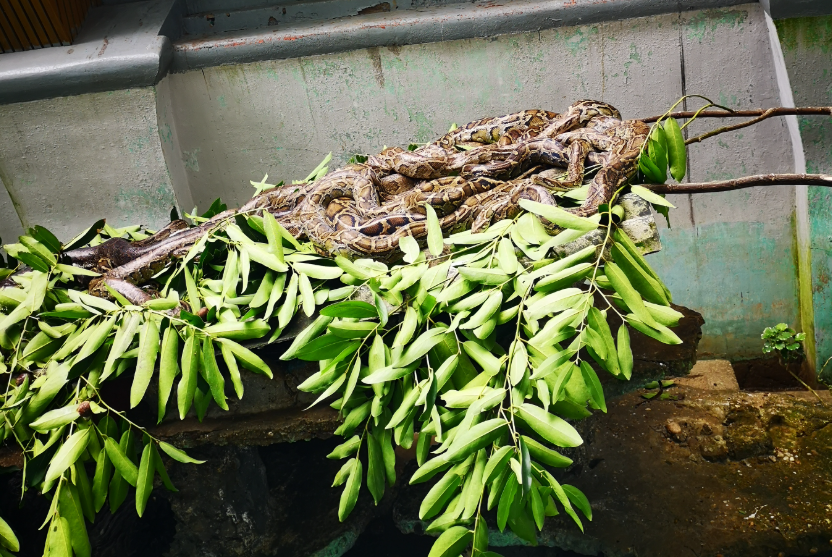When you think of zoos, you probably imagine the bustling, well-marked entrances of major city attractions. But Yangon Zoo, tucked away near Kandawgyi Lake, offers a different experience—one that’s both surprising and, at times, a little unconventional. Let’s take a closer look at this lesser-known wildlife destination in Myanmar and see what makes it worth a visit.
Finding Yangon Zoo—If You Can!
Unlike the grand, flashy entrances of many zoos around the world, Yangon Zoo’s entrance is easy to miss. Hidden behind lush green trees, the signage isn’t exactly screaming for attention. If you drive a little too fast, you might just zoom past it. Once inside, you’re greeted not by the ticket booth but by a parking lot. And here’s the first surprise—no asphalt or concrete. Instead, during the rainy season, visitors have to navigate muddy puddles just to reach the entrance. The silver lining? Parking seems to be free, and if you’re struggling to find a spot, you can always try the Signature restaurant across the street.
Meet the Residents—From Hippos to Tigers
Once inside, you’ll find a range of animals familiar to zoo-goers: lions, tigers, bears—oh my! But what’s interesting is the number of species that are native to Myanmar. Hippos, for example, are surprisingly common here, and unlike in some zoos where their enclosures are murky and unkempt, the ones at Yangon Zoo enjoy clean pools and well-maintained resting areas. Perhaps it’s the zoo staff’s dedication or just the frequent downpours of Yangon’s rainy season keeping everything fresh!
Another fascinating resident is the otter, known for its playful nature. These little water-loving creatures are clearly used to being fed by visitors. They stand on their hind legs, tails for support, eagerly watching people, ready to rush over the moment food is tossed their way.
The Struggle of Myanmar’s Tigers
Myanmar is home to the Bengal tiger, but their numbers have dwindled due to deforestation and poaching. While the rugged mountains of northern Myanmar may still provide sanctuary for some, government control in these regions is weak, making conservation efforts challenging. Seeing these majestic creatures behind bars, gazing longingly at the open sky, is a bittersweet reminder of the wild places they once roamed.
Slithering Surprises—The Snake Collection
For those fascinated (or terrified) by reptiles, the zoo has an impressive collection of snakes. From giant pythons that seem to suffocate the very air around them to small, brightly colored serpents that blend perfectly with their surroundings, the variety is astounding. Some are non-venomous constrictors, while others, with their flickering tongues and intense gazes, are clearly predators to be feared—even from behind glass.

Deer, Monkeys, and a Unique Monkey Island
One of the most unexpected sights at Yangon Zoo is the large population of deer. Seeing an entire herd crowded into a single enclosure is quite a surprise, especially considering deer are often associated with northern climates. But perhaps the most ingenious part of the zoo’s design is the monkey island. Surrounded by water, the island acts as a natural barrier, keeping the playful primates contained without the need for deep pits or towering fences.
A Dark Side to the Story
Unfortunately, not all stories from Yangon Zoo are happy ones. There have been shocking incidents in Myanmar’s zoos, including one case where a bear had its paw brutally cut off—likely for the illegal wildlife trade. It’s a tragic reminder that as long as there is demand for exotic animal parts, there will always be poachers willing to take the risk. As the saying goes, “No buying, no killing.” If we want to protect these animals, we need to change consumer behavior, not just punish those who commit the crime.
Should You Visit Yangon Zoo?
If you’re living in Myanmar or just visiting with some extra time on your hands, Yangon Zoo can be an interesting stop. It’s not a high-end, world-class wildlife sanctuary, but it does offer a unique look at the country’s native animals. More importantly, it reminds us of the delicate balance between conservation and human interference.
As visitors, we have a responsibility—to appreciate wildlife without exploiting it. Whether in a zoo or in the wild, these animals deserve respect and protection. After all, we don’t need to be their friends, but we certainly shouldn’t be their enemies.

No comments yet.